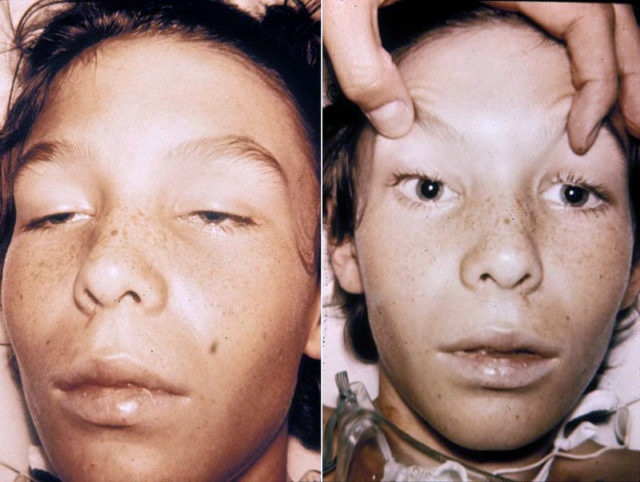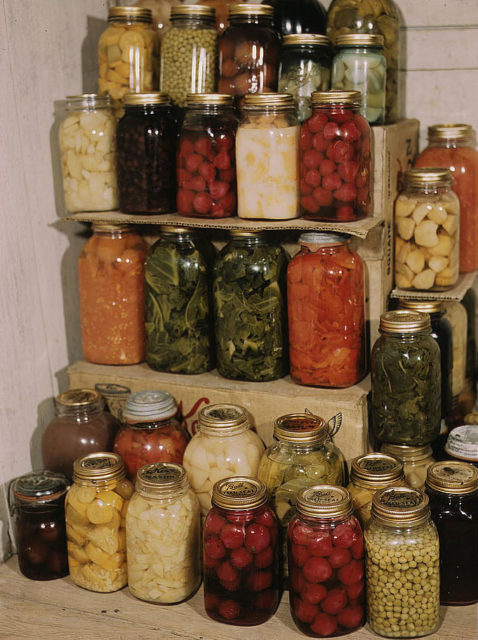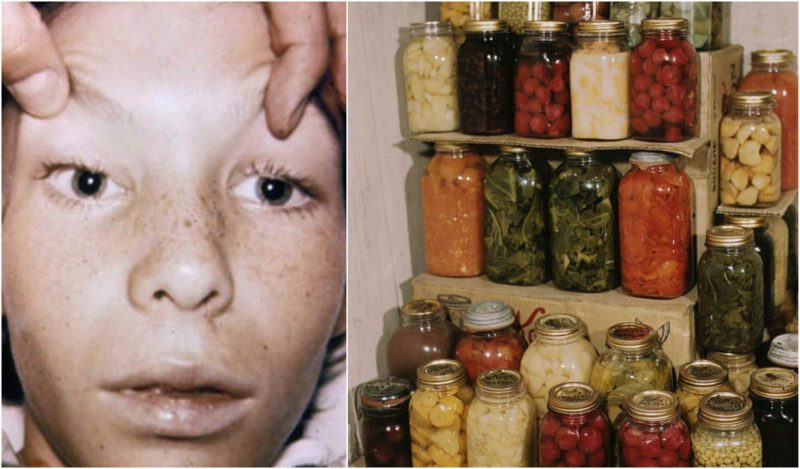Botulism is a serious and potentially fatal illness that can be contracted by ingesting spoiled food or food that didn’t receive a proper heat treatment. The disease is caused by a potent toxin named botulinum, which is produced when a specific type of bacteria becomes exposed to low levels of oxygen. Botulism is foodborne but is also common among people who inject street drugs.
Nowadays the illness can be successfully treated by antitoxins and antibiotics, and it is fatal in only 5-10 percent of cases. However, before the emergence of effective medicines, botulism used to be a scourge that killed everyone who had the misfortune to contract it.

Botulism was first described by German physicians in the early 1790’s, but a proper cure wasn’t discovered until after the World War II when antibiotics revolutionized the medical practices. The illness was relatively unknown in the United Kingdom; it was first recognized in Scotland in 1922 when a mysterious epidemic spread from a single meal and killed eight people.
On 14th August of 1922, a group of 35 people gathered at the Loch Maree Hotel on the shore of the Loch Maree lake in the Northwest Highlands of Scotland. The group consisted of fishermen, ghillies, mountain climbers and their wives. The hotel staff prepared packed lunches for the group, which were eaten throughout the day.
Over the course of the next three days, eight people that were present at the gathering fell ill and subsequently died. Local physicians who examined the unfortunate ill were baffled by the unusual symptoms and the rapid onset of death.

Several physicians suspected that the people were intentionally poisoned by a powerful unknown toxin, and legal authorities were called to investigate a possible mass murder.

The police investigation marked the owner of the Loch Maree Hotel as a possible suspect, but an expert physician arrived from Glasgow and deduced that the deaths might have been connected to a foodborne disease.
Some of the food leftovers from the lake gathering were acquired from the hotel’s trash disposal, and although the obtained samples were tiny, the botulinum toxin was successfully discovered among the leftovers of a wild duck paste.

The wild duck paste was home-canned by the hotel’s staff, and some of the packed lunch consisted of wild duck paste sandwiches. An inquiry revealed that eight people in the group particularly enjoyed the taste of the paste, and no one but them ate the sandwiches.
Since botulism was an illness of unknown properties at the time, all eight people died over the course of the next three days. The incident sparked research on the deadly illness that eventually led to the installment of legal regulations that control home-canning in Scotland.
